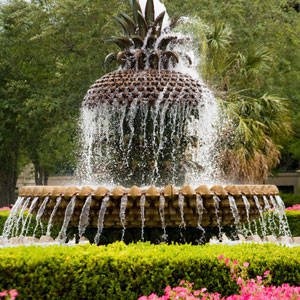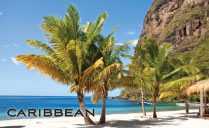
 The historic peninsula of Charleston juts out into the harbor at the meeting of the Ashley and Cooper Rivers, named for Lord Anthony Ashley Cooper, who helped finance the original colony.
The historic peninsula of Charleston juts out into the harbor at the meeting of the Ashley and Cooper Rivers, named for Lord Anthony Ashley Cooper, who helped finance the original colony.
- While the English originally settled up river in 1670, they moved to the edge of the marsh a decade later so they would be more strategically located for defense and commerce. The settlement continued to expand so that much of the land South of Broad Street, including White Point Gardens and the Battery, is manmade.
- Each June, Fort Moultrie marks Carolina Day with a re-enactment of the 1776 attack by the British on Sullivan’s Island. Despite being outnumbered and outgunned, the 2nd South Carolina Regiment, led by Col. William Moultrie, won a decisive victory against the British.
- The first shots of the Civil War were fired on Fort Sumter on April 12, 1861, as Charlestonians reportedly cheered from their rooftops. Union soldiers surrendered the fort to the Confederates four days later.
- Patriot’s Point Naval and Maritime Museum is home to several vessels, including the USS Yorktown aircraft carrier, which served in World War II and Vietnam but is now endangered by erosion.
- Castle Pinckney was once Charleston’s Ellis Island.
- South Carolina has 344,500 acres of salt marsh – more than any other Atlantic coast state. Explore this eco-system to find scurrying fiddler crabs, terrapin turtles and great herons, while stingrays and dolphins may show themselves in local tributaries. You might even catch a glimpse of an alligator or two.
 The historic peninsula of Charleston juts out into the harbor at the meeting of the Ashley and Cooper Rivers, named for Lord Anthony Ashley Cooper, who helped finance the original colony.
The historic peninsula of Charleston juts out into the harbor at the meeting of the Ashley and Cooper Rivers, named for Lord Anthony Ashley Cooper, who helped finance the original colony.




